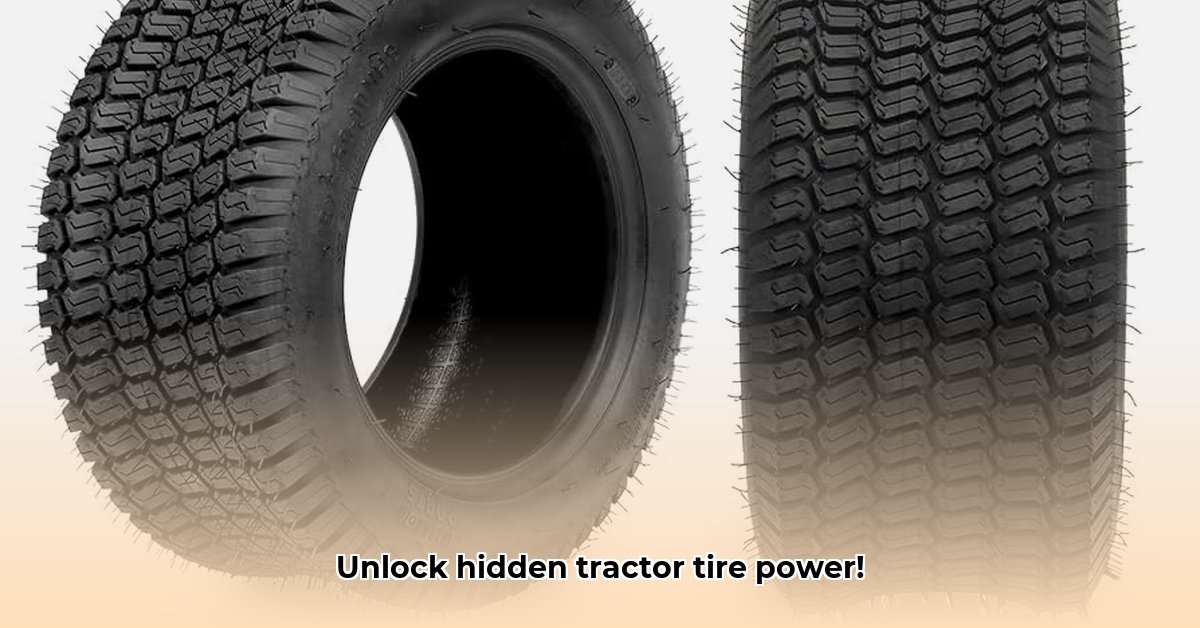
26x12x12 Tractor Tires: Maximizing Farm Productivity
Choosing the right tires can significantly impact your farm's efficiency and profitability. 26x12x12 tractor tires, a common size for compact tractors, are no exception. Understanding their features, maintenance, and selection process is crucial for optimizing your operations. Are you ready to unlock the full potential of your equipment? For more information on inner tubes, check out this resource.
Understanding 26x12x12 Tractor Tires: Beyond the Size
The 26x12x12 designation refers to the tire's diameter, width, and rim diameter. But their value extends beyond simple dimensions. These tires provide a balance of maneuverability, stability, and traction, making them ideal for various tasks on compact tractors. They are commonly used for smaller farm operations or specialty work requiring agility and precision.
However, did you know that the right tire can significantly reduce soil compaction? Reduced compaction leads to healthier soil, resulting in improved crop yields and long-term sustainability. This translates to better harvests and a more environmentally friendly agricultural practice. Isn't that a compelling reason to invest wisely in your tires?
Choosing the Right 26x12x12 Tractor Tires: Key Considerations
Selecting the perfect tires involves several critical factors. Ignoring these factors could lead to decreased efficiency and increased costs. How many hours do you spend each year dealing with tire-related issues?
Tire Construction (Radial vs. Bias-Ply): Radial tires generally offer superior fuel efficiency and a smoother ride compared to bias-ply tires. They also provide better traction and stability on uneven terrains. However, bias-ply tires tend to be more durable and better suited for rough conditions.
Tread Pattern: The tread pattern dramatically affects traction. Aggressive treads are beneficial in muddy or loose soil, while less aggressive treads are better for hard surfaces. What type of terrain do you primarily work on? Matching tread pattern to soil type optimizes both traction and soil health.
Load Capacity: Always ensure your tires can handle the combined weight of your tractor and attachments. Overloading tires leads to premature wear, potential failure, and costly downtime. "Overloading tires isn’t just about damage; it poses significant safety risks for the operator and others on the property," says Dr. Amelia Hernandez, Agricultural Engineering Professor at State University.
Inflation Pressure: Maintaining the correct inflation pressure is crucial. Underinflation increases wear and reduces fuel efficiency, while overinflation damages tires. Always consult the manufacturer's recommendations printed on the tire sidewall for optimal pressure.
Maintaining Your 26x12x12 Tractor Tires: A Simple Guide
Proper maintenance significantly prolongs tire lifespan and prevents unexpected downtime.
Regular Inspection: Regularly check tires for cuts, punctures, and excessive wear. Early detection of problems prevents escalation and costly repairs.
Tire Rotation: To ensure even wear and extend tire life, rotate tires following the manufacturer's recommendations outlined in your tractor or tire manual. This is especially essential for uneven terrain.
Consistent Pressure Monitoring: Regularly check and adjust tire pressure using an accurate gauge, especially before and after long operating periods or significant temperature changes.
Appropriate Storage: Store tires properly when not in use, protecting them from sunlight, extreme temperatures, and potential damage.
Making Informed Decisions: Navigating the Market
A variety of manufacturers produce 26x12x12 tractor tires, each with unique features and price points. Thorough research and comparison are essential. Reading reviews from other farmers and consulting with equipment dealers or tire specialists can provide valuable insights. Remember, a small investment in research can save you significant expenses in the long run.
Frequently Asked Questions (FAQs)
Q: How often should I rotate my tires? A: Consult your owner's manual or contact a tire professional for recommendations. Frequency depends on usage and terrain.
Q: What's the ideal inflation pressure? A: Always refer to the information printed on the tire's sidewall for the recommended pressure. This is crucial for safety and optimal performance.
Q: How can I tell if my tires are overloaded? A: Signs include bulging sidewalls or uneven wear patterns. If uncertain, seek evaluation from a qualified mechanic or tire specialist. Overloading can lead to dangerous and costly outcomes.
Investing in high-quality 26x12x12 tractor tires is a crucial step towards optimizing your farm's productivity and profitability. By understanding the selection process, emphasizing proper maintenance, and proactively addressing any issues, you can ensure the longevity and optimal performance of your tires, ultimately boosting your harvest and business success.